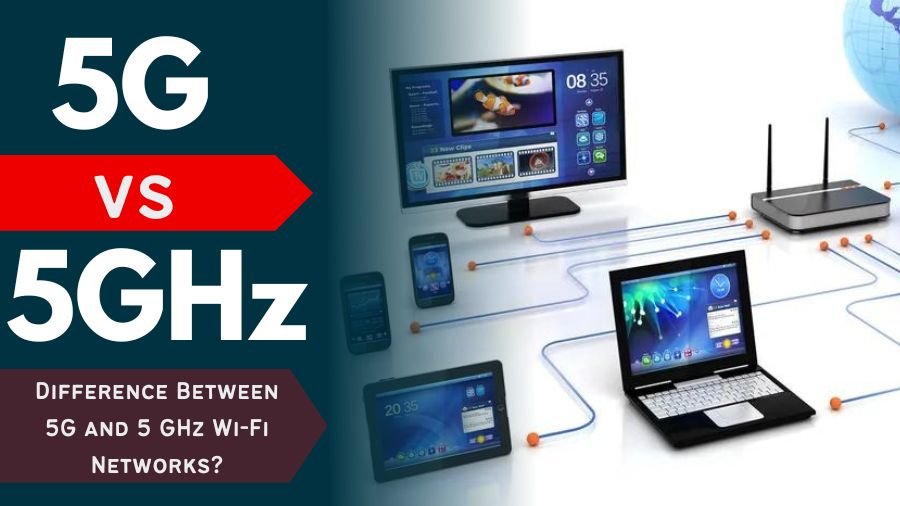The phrases 5G and 5 GHz Wi-Fi are frequently used simultaneously in the quickly changing world of interaction. They have different functions, even though they both help make web surfing quicker and highly efficient. To help consumers navigate the complicated realm of cellular systems, this blog will explain the distinctions and interconnections among different technologies.
What is 5G?
In the field of wireless technologies, 5G is the most recent big thing, offering smaller distances and quicker internet access. With its incomparable speeds, reduced delays, and expanded ability, it serves as the cornerstone for future worldwide communication.
The possibilities that this revolutionary invention creates include remote medical treatment, autonomous automobiles, and rich virtual and augmented reality experiences. 5G represents a major advancement in cellular innovation since it offers bandwidth that exceeds the current limits, in contrast to 4G LTE, which came before it.

What is 5 GHz Wi-Fi?
5 GHz Wi-Fi, on the other hand, works within the 5 GHz frequency range, as opposed to the widely used 2.4 GHz band. This updated frequency bandwidth supports numerous devices with greater transmission rates and responds to the growing need for more rapid cellular interaction. “Dual-band” or “tri-band” modems are machines that function in both 2.4 GHz and 5 GHz frequencies concurrently, offering consumers higher efficiency and lower interruption.
With more unique methods, the 5 GHz frequency eases overcrowding and boosts network performance as a whole. Because of this, it works especially well in areas where there are several devices linked, providing an increasingly reliable and seamless wireless connection.
5G Home Internet: Getting Through the Confusion
The advent of 5G Home Internet, an innovation that combines features associated with conventional cable connections with 5G, added confusion. In contrast to traditional configurations which depend on cable networks, 5G Home Internet makes use of radio 5G signals that are provided by a Cellular Operator. After that, this signal is transformed into a Wi-Fi transmission and delivered via an internet routing device, ultimately functioning in the 5 GHz band. For those using the service, this mixture of advancements may make it difficult to know the difference between 5G and 5GHz.
Features of 5G versus 5GHz
Even though they are two different techniques, 5G and 5GHz differ in what they can do and both have their own benefits such as:
1. Signal Quality and Range
5G:
Throughout its 3 bands of frequencies (low, mid, and high) 5G’s signal coverage differs. Low-band Frequencies are ideal for providing broad availability in farming regions since they have a range of many thousands of meters. High-band Frequencies, nevertheless, are only able to travel just a few meters, which makes them perfect for highly crowded metropolitan regions where flawless connectivity depends on shorter-range, higher-capacity interconnections.
5 GHz Wi-Fi:
5 GHz wireless internet has a confined reach but offers a high-quality transmission within its operational span of about 15 meters. However, physical barriers like buildings and obstruction from other equipment might deteriorate the signal’s quality. For these reasons, 5 GHz Wi-Fi is ideal for areas having fewer obstacles and narrower areas.
2. The speed
5G:
Throughout all of the Radio Frequencies, 5G’s speed potential differs significantly. With connection speeds between 50 to 250 Mbps, Lower-band 5G Frequencies can provide consistent coverage across extensive ranges. On the other hand, Higher-band boasts a potential throughput of 20 Gbps, which represents a substantial increase in information transfer rates. Because of this, 5G is especially well suited for data-rich activities like delivering high-resolution movies and virtual realities.
5 GHz Wi-Fi:
5GHz provides excellent networking encounters, with potential rates of about 1.3 Gbps. For apps that need a lot of digital information transmission, like Online Gaming and 4K Media Streaming, it works well. People can use a wireless connection speed evaluation application, to determine the actual speed of the connection.
3. Capacity
5G:
With the ability to serve several connectivity in a given region, Higher-band 5G specializes in connecting several devices at once. Because of this, it may be used in congested public areas such as airports where a large number of machines need to be connected without compromising efficiency.
5 GHz Wi-Fi:
Even though 5 GHz Wi-Fi is strong in and of itself, it can usually accommodate tens of devices. Because of this restriction, it works well in locations like small offices or homes with an average amount of linked devices.
What Differentiates 5G from 5 GHz?
One important way to differentiate 5G from 5 GHz is to look at what their main purposes are. The most recent version of cellular networks, or 5G, is transforming how we interact with one another because it is so good at sending large amounts of material. Conversely, 5 GHz is an unrestricted frequency range that wireless routers use to facilitate data transmission.
The fact that 5G is incompatible with the 5 GHz bandwidth should not be overlooked. With 5G fostering data development and 5 GHz enabling successful information accessibility, the roles they play in the wireless communication environment are highlighted by this basic divergence.
Selecting Between Regular Wi-Fi and 5G
In Comparison among common Wi-Fi and 5G Wi-Fi, it is important to understand the distinct benefits of each frequency band. Although the 5 GHz band specializes in providing efficient speeds, the 2.4 GHz band has a better range, making it perfect for larger areas. Furthermore, the 5 GHz spectrum maximizes total system efficiency by more skillfully navigating interception and capacity.
5G’s Effect on Future
The features and uses of 5G and 5 GHz Wi-Fi are similar, regardless of their variances. In the upcoming ten years, Wi-Fi, which has historically been quicker than cellular connection, may undergo changes. Although 5G will not rapidly replace 5 GHz Wi-Fi in homes, there will probably be an alteration in the kind of equipment that is linked. To make use of the lower latency and potential fastest speeds of 5G for highly sought-after apps including Virtual and Augmented Reality, Online Gaming, and peripheral IoT goods, future technology may handle simultaneous Wi-Fi and 5G signals.
In the end, knowing the differences between 5G and 5 GHz Wi-Fi is increasingly significant as technology evolves. In the constantly developing field of internet interaction, each fulfills a distinct function, making the entire globe a more highly proficient and linked place.







